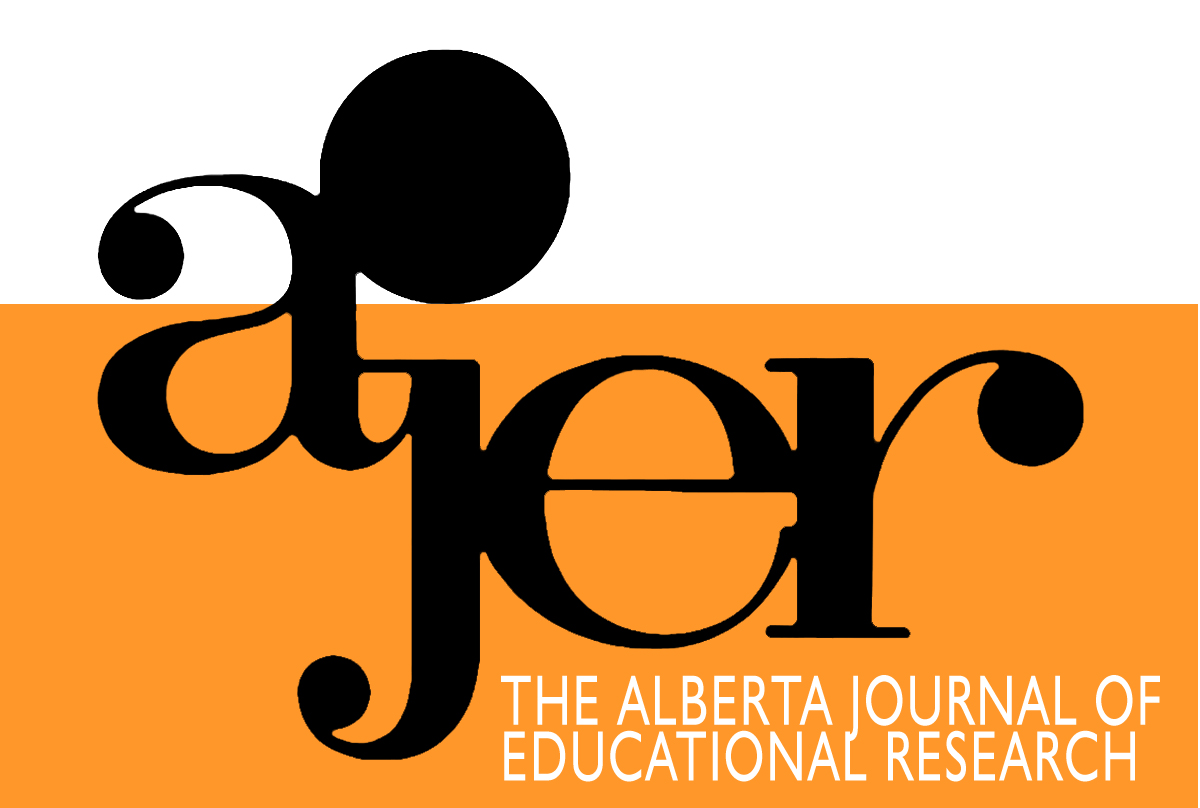Positioning Ontario’s Character Development Initiative In/Through Its Policy Web of Relationships
DOI:
https://doi.org/10.55016/ojs/ajer.v58i1.55554Keywords:
policy web, character education, policy analysisAbstract
Constructing a policy web of relationships is proposed as a useful way to identify and understand complex relationships between policies and their contexts. In Canada, the province of Ontario's Character Development Initiative (CDI) and its relationships to student achievement, citizenship education, and safe schools policies provide an illustrative example of the web’s utility. Mandated by the Ontario Ministry of Education, the Character Development Initiative was expected to be implemented by all publicly funded school boards during the 2007-2008 school year. This application of the policy web shows how what happens in one policy affects what happens in another and highlights relationships between policies that might be overlooked if one’s focus is limited to a single policy’s texts, practices, or influences alone. This example also shows how creating a policy web of relationships highlights issues, texts, practices, and ideas important across different policy fields and how a particular policy is positioned in relation to other policies. This knowledge may be used to support, resist, or influence policy at different levels. Mapping the relationships between policies using a web of relationships also provides historical understanding of the policies and knowledge about why policies (re)emerge at particular moments.La création d'un réseau de relations portant sur les politiques est évoquée comme façon utile d'identifier et de comprendre les rapports complexes entre les politiques et leurs contextes. Au Canada, l'initiative ontarienne nommée Initiative de développement du caractère, et ses liens avec le rendement des élèves, l'éducation à la citoyenneté et les politiques sur la sécurité à l'école, offre un exemple de l'utilité d'un tel réseau. On s'attendait à ce que l'initiative de développement du caractère, mandatée par le Ministère de l'éducation de l'Ontario, soit mise en œuvre par toutes les écoles publiques pendant l'année scolaire 2007-2008. Cette application de réseau de politiques démontre dans quelle mesure un changement dans une politique affecte l'évolution d'une autre, et fait ressortir des liens entre les politiques dont on ne tiendrait pas compte si on limitait notre attention aux textes, pratiques ou influences d'une seule politique. De plus, cet exemple illustre la façon dont un réseau de politiques fait ressortir d'une part, l'importance de questions, textes, pratiques et idées d'un domaine à l'autre et d'autre part, la position d'une politique par rapport aux autres. Ces connaissances peuvent servir à appuyer, rejeter ou influencer les politiques à divers niveaux. Un réseau de relations entre les politiques offre également un aperçu historique de celles-ci et une explication de leur émergence à des moments donnés.
Downloads
Issue
Section
License
UNIVERSITY OF ALBERTA COPYRIGHT LICENSE AND PUBLICATION AGREEMENT
If accepted, authors will be asked to sign a copyright agreement with the following points:
A. Where there is any inconsistency between this Copyright License and Publication Agreement and any other document or agreement in relation to the same subject matter, the terms of this Agreement shall govern.
B. This document sets out the rights you are granting in relation to publication of your article, book review, or research note entitled (the “Article”) through inclusion in the academic journal titled Alberta Journal of Educational Research (the “Journal”) published through the Faculty of Education, representing the Governors of the University of Alberta (the “Journal Editor”).
C. There will be no payment to you for this publication and grant of rights. In consideration of the agreement to publish the Article in the Journal:
1. You are warranting that:
- the content of the Article is your original work, and its content does not contain any material infringing the copyright of others; or, where the Article is not entirely your original work, you have obtained all necessary permissions in writing to grant the rights you are giving in this agreement;
- the content of the Article does not contain any material that is defamatory of, or violates the privacy rights of, or discloses the confidential information of, any other person;
- the Article has not been published elsewhere in whole or in part, and you will not allow publication of the Article elsewhere without the consent of the Journal Editor;
- the names of all co-authors and contributors to the Article are:
2. You agree to license the copyright in the Article to the Journal Editor, on a worldwide, perpetual, royalty free basis; and to the extent required by the terms of this agreement. You shall retain the right at all times to be acknowledged as the/an author of the Article.
3. You further agree that the Journal Editor has the entitlement to deal with the Article as the Journal Editor sees fit, and including in the following manner;
- The right to print, publish, market, communicate and distribute the Article and the Journal, in this and any subsequent editions, in all media (including electronic media), in all languages, and in all territories, ing the full term of copyright, and including any form of the Article separated from the Journal, such as in a database, abstract, offprint, translation or otherwise, and to authorize third parties to do so;
- The right to register copyright of the Journal;
- The right to edit the Article, to conform to editorial policy as the Journal Editor sees fit.
4. If any co-author or contributor to the Article does not sign this agreement, the Journal Editor reserves the right to refuse to publish the Article.



